Month: February 2022
Sunday Poem
House Slave
The first horn lifts its arm over the dew-lit grass
and in the slave quarters there is a rustling—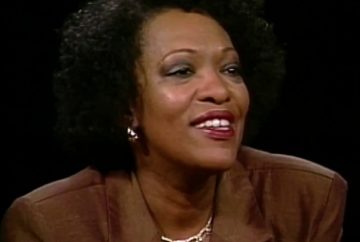
children are bundled into aprons, cornbread
and water gourds grabbed, a salt pork breakfast taken.
I watch them driven into the vague before-dawn
while their mistress sleeps like an ivory toothpick
and Massa dreams of asses, rum and slave-funk.
I cannot fall asleep again. At the second horn,
the whip curls across the backs of the laggards—
sometimes my sister’s voice, unmistaken, among them.
“Oh! pray,” she cries. “Oh! pray!” Those days
I lie on my cot, shivering in the early heat,
and as the fields unfold to whiteness,
and they spill like bees among the fat flowers,
I weep. It is not yet daylight.
by Rita Dove
from Selected Poems
W.W. Norton, 1993
Black Literature – Past, Present and Future: A Reading List
From PEN America:
 This week’s reading list is curated by PEN America’s World Voices Festival team and features a mix of classic and contemporary novels, essay collections, and poetry collections. It includes the searing prose of James Baldwin’s 1963 bestseller The Fire Next Time, in which he tells his nephew how to navigate the injustices he will face as Black man in America. We also highlight Nic Stone’s Dear Martin, published more than 50 years later but which exposes the same threats of racial violence that still plague our country and threaten young Black men.
This week’s reading list is curated by PEN America’s World Voices Festival team and features a mix of classic and contemporary novels, essay collections, and poetry collections. It includes the searing prose of James Baldwin’s 1963 bestseller The Fire Next Time, in which he tells his nephew how to navigate the injustices he will face as Black man in America. We also highlight Nic Stone’s Dear Martin, published more than 50 years later but which exposes the same threats of racial violence that still plague our country and threaten young Black men.
We chose the works on this list because, like Baldwin’s essay and Stone’s YA novel, they are in conversation with one another. They inform one another, build off of one another, and celebrate one another. They do not just detail the plight of Black people. Rather, these works of art, like any example of great literature, are nuanced, challenging, and boundless. History has proven that interest in Black literature surges during periods of social unrest. But the canon of Black literature did not suddenly appear in these moments. Black literature is American literature.
The Fire Next Time by James Baldwin (1963)
Baldwin’s powerful essays evoke his upbringing while calling into attention the racial violence that plagued the United States at the start of the Civil Rights Movement. The text, which contains two “letters,” written on the centennial of the Emancipation Proclamation, quickly became a bestseller and galvanized the nation.
More here. (Note: At least one post throughout the month of February will be devoted to Black History Month. The theme for 2022 is Black Health and Wellness)
Abraham Lincoln and Frederick Douglass: Inside Their Complicated Relationship
Farrell Evans in History:
 In the middle of the 19th century, as the United States was ensnared in a bloody Civil War, President Abraham Lincoln and abolitionist Frederick Douglass stood as the two most influential figures in the national debate over slavery and the future of African Americans. They met together three times in the White House, and while Douglass was at first harshly critical, he ultimately came to view Lincoln as “emphatically the Black man’s president: the first to show any respect for their rights as men.”
In the middle of the 19th century, as the United States was ensnared in a bloody Civil War, President Abraham Lincoln and abolitionist Frederick Douglass stood as the two most influential figures in the national debate over slavery and the future of African Americans. They met together three times in the White House, and while Douglass was at first harshly critical, he ultimately came to view Lincoln as “emphatically the Black man’s president: the first to show any respect for their rights as men.”
The first time they met, in August 1863, Douglass was perhaps the most famous Black man in the world. Since escaping from slavery to the North in 1838, he had written two bestselling autobiographies that recounted his journey from a Maryland plantation to lecture halls all over the world as a leading anti-slavery crusader, journal publisher and champion for African American rights. With the Civil War in full stride, Douglass was advocating for the equal treatment of Black Union soldiers. In March, he had issued his famous “MEN OF COLOR to ARMS! broadside calling for Black men to enlist in the Union army. Two of his sons had joined the 54th Massachusetts Black regiment.
More here. (Note: At least one post throughout the month of February will be devoted to Black History Month. The theme for 2022 is Black Health and Wellness)
Death Drive Nation
 Patrick Blanchfield in Late-Lite:
Patrick Blanchfield in Late-Lite:
In the busy holiday rush of December 2019, a 27-year-old UPS driver named Frank Ordóñez, who had the day off, volunteered to cover a shift for his friend. On his route delivering packages through the suburbs of Miramar, Florida, Ordóñez was carjacked and held at gunpoint by two men who had just robbed and shot up a nearby jewelry store. The police were hot on their heels, and a car chase ensued. Audiences watched on TV, the footage broadcast live by news helicopters, as the big brown van turned onto Interstate 75, Ordóñez still inside.
The chase proceeded for twenty miles. When rush-hour traffic slowed to a crawl, police representing three separate departments leapt from their vehicles and swarmed in. Bobbing and weaving for cover behind the cars of terrified commuters, they exchanged fire with the carjackers, ultimately surrounding and emptying their weapons into the UPS van. Nineteen officers let off some 200 rounds. In minutes, both carjackers were dead, as were Ordóñez and a 70-year-old bystander named Richard Cutshaw.
Within hours of Ordóñez’s death, his employer released a statement thanking the police for their role in killing him. “We are deeply saddened to learn a UPS service provider was a victim of this senseless act of violence,” ran the company’s statement that evening. “We extend our condolences to the family and friends of our employee and the other innocent victims involved in the incident. We appreciate law enforcement’s service and will cooperate with the authorities as they continue the investigation.”
More here.
Acute Dollar Dominance
 Mona Ali in Phenomenal World:
Mona Ali in Phenomenal World:
In early 2020, the “dash for cash” in the US Treasury market prompted the Fed to relaunch its dollar swap lines, which it did in mid-March of that year. In the aftermath of the 2008 Global Financial Crisis (GFC), the New York Fed had established permanent arrangements to supply dollars to five key foreign central banks. But as the emerging pandemic rattled global financial markets, dollar swaps were temporarily extended to nine more foreign central banks. Less privileged foreign central banks not extended such swap lines were instead given access to the Fed’s brand-new Foreign and International Monetary Authorities (FIMA) repurchase agreement facility, which allowed them to exchange their US Treasury securities for dollars as an alternative to dumping the securities for cash in the open market. The move was part of a concerted suite of measures undertaken by the Fed to stabilize dollar funding markets. (Compared to peak swap use of $449 billion, FIMA Repo use peaked at a relatively paltry $1 billion.) That spring, the Fed balance sheet mushroomed from $4 to $7 trillion. The Fed’s decisive actions quashed any doubt that the world’s most powerful central bank would hesitate to assume the mantle of monetary hegemony. As of the beginning of 2022, Fed assets stand close to $9 trillion.
The coronavirus crisis highlighted stark disparities in financing capacity across the globe. Monetary and fiscal relief amounted to one-fifth of GDP in advanced economies, only six or seven percent of output in smaller economies, and a mere two percent of GDP in the poorest of nations. The US macroeconomy’s rebound—steeper than that of any other rich economy—is an outcome of its $5-trillion-plus stimulus. In 2021, per capita growth in low-income economies was a tenth of that in advanced economies, foregrounding the starkly divergent paths of economic recovery. Increased government spending in response to the pandemic birthed deficits and debt in advanced economies that were twice the size of those in poorer economies. However, given the strictures placed on poorer nations by the international financial hierarchy, for some financially subordinated economies, public debt accumulation has brought sovereign debt default closer to the horizon.
More here.
How the Method Made Acting Modern
Alexandra Schwartz in The New Yorker:
In January, 1923, Lee Strasberg went to Al Jolson’s 59th Street Theatre to see “Tsar Fyodor Ivanovich,” a nineteenth-century Russian play about sixteenth-century Russian politics, performed, in Russian, by a company called the Moscow Art Theatre. Strasberg, twenty-one years old, was born in a Polish shtetl and brought up on the Lower East Side. He worked as a bookkeeper for a business that sold human hair. He didn’t know Russian.
What he knew was acting. As a kid, Strasberg had performed in a few plays—his brother-in-law did the makeup for an amateur Yiddish theatre troupe—and by the time he graduated from high school he had fallen headlong in love with the theatre. He went to show after show on Broadway, where he saw extraordinary performances by some of the great actors of the day: Jeanne Eagels, Giovanni Grasso, Eleonora Duse. Other performances should have been extraordinary but weren’t. Sometimes an actor seemed to glow with a private, ineffable fire, only to lose the spark halfway through the play. Or an actor might start off stiff and flat and then suddenly flare with “inner life.”
Strasberg began to think about what made some performances succeed and some fail, and concluded that it must have to do with whether or not the actor was feeling inspired. This presented its own dilemma, because inspiration is hellishly inconsistent. You can’t just flip a switch and expect an inner bulb to go on. Or can you?
More here.
Adorno’s damaged life
 Peter E. Gordon in The New Statesman:
Peter E. Gordon in The New Statesman:
Minima Moralia is a work of exile. Published just over 70 years ago in 1951, the greater share of it was written at the conclusion of the Second World War, when its German-born author Theodor Wiesengrund Adorno was living in Los Angeles County, not far from other artists and intellectuals who had the good fortune to escape the Third Reich. “The violence that expelled me,” he explained, left him with an enduring sense of guilt at the very fact of his survival. The book’s subtitle, “Reflections from Damaged Life”, is a record of this unhealed wound, a bitter confession that even to write about individual experience suggests a complicity with “unspeakable collective events”. But Adorno worked at the trauma and made of it an irritant for thinking, sand for the pearls of insight that would fill each page. It is the most personal book he ever wrote, and even at the highest peaks of abstraction, it does not efface its origins in autobiography. Not unlike the Essais by the 16th-century humanist Michel de Montaigne, Adorno’s book is not only a series of philosophical experiments but also an exercise in self-portraiture. What Adorno calls “subjective experience” must serve as a permanent element for all criticism if it does not wish to contribute to the further destruction of humanity.
How can we classify an intellectual who abhorred classification? Critical of all group loyalty and always distancing himself from his social surroundings, Adorno was a cosmopolitan intellectual who carried his erudition on his back as the only possession that mattered.
More here.
‘Adam’: S Hareesh’s collection of short stories is a disturbingly real study of dark human behaviour
Saloni Sharma in Scroll.in:
 Chances are, if you haven’t been living under a pandemic-shaped rock of ascetic withdrawal from the real world, you will have heard of S Hareesh. His debut novel, Meesha, translated from the Malayalam into English as Moustache, won the JCB Prize for Literature in 2020. India’s 2020 official entry to the Academy Awards, Jallikattu, was based on one of Hareesh’s short stories from the collection Adam, which won the Kerala Sahitya Akademi Award of 2016. This same award-winning anthology of nine stories has been translated into English by Jayasree Kalathil – and what a stunner of a collection it is.
Chances are, if you haven’t been living under a pandemic-shaped rock of ascetic withdrawal from the real world, you will have heard of S Hareesh. His debut novel, Meesha, translated from the Malayalam into English as Moustache, won the JCB Prize for Literature in 2020. India’s 2020 official entry to the Academy Awards, Jallikattu, was based on one of Hareesh’s short stories from the collection Adam, which won the Kerala Sahitya Akademi Award of 2016. This same award-winning anthology of nine stories has been translated into English by Jayasree Kalathil – and what a stunner of a collection it is.
Towards a posthumanist aesthetic
There is so much going on in the stories that make up Adam. Hareesh makes a disturbingly real study of human behaviour, of the slivers of darkness that lurk under the surface of urbanity, of a playfulness that doesn’t quite know how to co-exist with the serious business of living. However, what catches the reader’s attention, perhaps more than anything else, is the distinct shift from an anthropocentric to a posthumanist aesthetic.
More here.
Elizabeth Hardwick: The Life Of An Essential Writer
Christian Lorentzen at Bookforum:
 The case of Elizabeth Hardwick is vexing in these ways and more. She was one of the supreme women of letters in postwar America. The scope of her achievement, much of it accomplished in occasional writings undertaken across six decades, has only begun to come into view with the appearance in 2017 of her Collected Essays. (A volume of Uncollected Essays is to follow this spring.) She chronicled the transformations of American life and culture across seven decades, traced the progress of American literature from its beginnings here and in Europe, connected those roots and parallel strands to the present in essays of idiosyncratic synthesis, and realized those ideas in her own fictions. She was a singular stylist and an essential writer of her time.
The case of Elizabeth Hardwick is vexing in these ways and more. She was one of the supreme women of letters in postwar America. The scope of her achievement, much of it accomplished in occasional writings undertaken across six decades, has only begun to come into view with the appearance in 2017 of her Collected Essays. (A volume of Uncollected Essays is to follow this spring.) She chronicled the transformations of American life and culture across seven decades, traced the progress of American literature from its beginnings here and in Europe, connected those roots and parallel strands to the present in essays of idiosyncratic synthesis, and realized those ideas in her own fictions. She was a singular stylist and an essential writer of her time.
more here.
Saturday Poem
Love after Love
The time will come
when, with elation,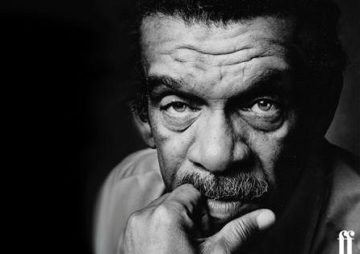
you will greet yourself arriving
at your own door, in your own mirror,
and each will smile at the other’s welcome,
and say, sit here. Eat.
You will love again the stranger who was yourself.
Give wine. Give bread. Give back your heart
to itself, to the stranger who has loved you
all your life, whom you ignored
for another, who knows you by heart.
Take down the love letters from the bookshelf,
the photographs, the desperate notes,
peel your own image from the mirror.
Sit. Feast on your life.
by Derek Walcott
from Derek Walcott Collected Poems
Farrar, Straus and Giroux, 1986
Chuck Klosterman Rewinds to ‘The Nineties’
Alexandra Jacobs at the NYT:
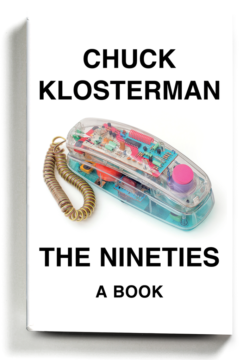 The era has lately been a source of curiosity, its aesthetic mined by digital natives who marvel at the freedom of a world where people partied and presented themselves without being haunted by their online shadows. “Every new generation tends to be intrigued by whatever generation existed 20 years earlier,” Klosterman writes. This particular look back has special romance, since, as he writes mock-portentously, “The internet was coming. The internet was coming. The internet was coming.” But the internet as we know it wasn’t quite there yet.
The era has lately been a source of curiosity, its aesthetic mined by digital natives who marvel at the freedom of a world where people partied and presented themselves without being haunted by their online shadows. “Every new generation tends to be intrigued by whatever generation existed 20 years earlier,” Klosterman writes. This particular look back has special romance, since, as he writes mock-portentously, “The internet was coming. The internet was coming. The internet was coming.” But the internet as we know it wasn’t quite there yet.
The 1990s were the twilight of a millennium and a monoculture (such as it was); the last time we (whoever “we” were) seemed to be on the same page: one we could crinkle in our hands.
more here.
Als, Hamilton, and Chalfant On Hardwick And Lowell
Why The Black Lives Matter Movement Matters to Me ( BLAM UK Essay Competition) By Sarah Fowler Aged-13
Sarah Fowler in BLAM:
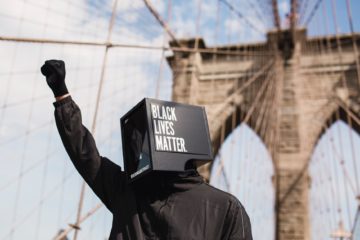 The BLM movement was founded on the 13th July 2013, by Alicia Garza; Patrisse Cullors and Opal Tometi. The movement was made to promote anti-racism and advocacy, it is often interpreted in the incorrect way by people who do not recognise how Black people are often victims of demonisation as well as criminalisation. This often results in people making ignorant comments that make it clear that the purpose of the movement was taken out of context: ‘ ALL LIVES MATTER ‘ they incessantly yell; ‘ Why is it always about race? Can’t you just get over it??’ they say way too passive-aggressively not knowing the true meaning of what we’re fighting for. We are fighting for the lives that were taken for reasons that only remain superficial, we are fighting for the next generation of people who go looked just like George Floyd, Breonna Taylor, Atatiana Jefferson, Stephon Clark, Michelle Cusseaux and the others that have died. They were killed for reasons that will only remain skin deep, and this time, it will not be in vain or go unnoticed.
The BLM movement was founded on the 13th July 2013, by Alicia Garza; Patrisse Cullors and Opal Tometi. The movement was made to promote anti-racism and advocacy, it is often interpreted in the incorrect way by people who do not recognise how Black people are often victims of demonisation as well as criminalisation. This often results in people making ignorant comments that make it clear that the purpose of the movement was taken out of context: ‘ ALL LIVES MATTER ‘ they incessantly yell; ‘ Why is it always about race? Can’t you just get over it??’ they say way too passive-aggressively not knowing the true meaning of what we’re fighting for. We are fighting for the lives that were taken for reasons that only remain superficial, we are fighting for the next generation of people who go looked just like George Floyd, Breonna Taylor, Atatiana Jefferson, Stephon Clark, Michelle Cusseaux and the others that have died. They were killed for reasons that will only remain skin deep, and this time, it will not be in vain or go unnoticed.
After their deaths gained publicity by the ‘Black lives matter’ movement, they were angered that no action was being taken except from being fired. ‘No justice, No peace!’ they scream as they walk the streets begging for justice. Protests started not only in America but all over the world. These protests started peacefully, and even so the police sprayed them with tear gas and rubber bullets, and even some cases real bullets. ‘Blue lives matter’ they say. ‘NO, All lives matter!’ they cry. These phrases are derived from Black lives matter and using them implies you are attempting to degrade black people for our efforts to ask for justice as well as to contrive the meaning of the BLM movement to these other ‘movements’. Blue lives matter was made for cops who are killed in the job they chose to work for, knowing the risks, knowing the time it would eat up, they CHOSE to be an officer. A black person cannot take off their skin like an officer takes their uniform after duty. All lives matter was made to say ‘All races matter, not just black people!’ not knowing that the black race is like a burning house asking to be taken care of while other people are asking for there to be dealt with when their houses have no complications.
More here. (Note: At least one post throughout the month of February will be devoted to Black History Month. The theme for 2022 is Black Health and Wellness)
Erich Fromm – The Art of Love (1989)
On The Depressing Fantasy Of Minds In Simulated Worlds
David Bentley Hart at The New Atlantis:
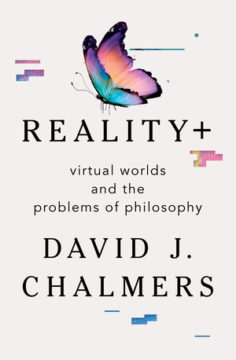 But, of course, there is no reason for believing any of this; and it seems far more likely that the process of replacing one’s neurons with computer chips would be little more than a very slow process of suicide, producing not the same behaviors as would a living mind, but only progressive derangement and stupefaction, culminating in an inert mass of diffusely galvanized circuitry. After all, any sober phenomenology of the full range of mental acts discloses a host of necessarily unified features that are almost by definition irreducible to a mere integration of diverse mechanical parts and discrete functions, and that no process of computation could reproduce: subjectivity as an indissoluble privacy; the unified and simultaneous field of apprehension belonging to that subjectivity; qualitative consciousness; intentionality and its intrinsic teleology; the indeterminate openness of the mind to novelty and even to fundamental revisions of its conceptual paradigms, which no computational algorithm could simulate; the immediate physical sense of self; the psychological sense of identity; judgments of value, such as “good” or “true” or “beautiful”; the prior and constant disposition of the mind toward these values, which seems to be the necessary motive of all movements of intellect and will toward the world; creative violations of rules that nevertheless make “sense” to us; and so on.
But, of course, there is no reason for believing any of this; and it seems far more likely that the process of replacing one’s neurons with computer chips would be little more than a very slow process of suicide, producing not the same behaviors as would a living mind, but only progressive derangement and stupefaction, culminating in an inert mass of diffusely galvanized circuitry. After all, any sober phenomenology of the full range of mental acts discloses a host of necessarily unified features that are almost by definition irreducible to a mere integration of diverse mechanical parts and discrete functions, and that no process of computation could reproduce: subjectivity as an indissoluble privacy; the unified and simultaneous field of apprehension belonging to that subjectivity; qualitative consciousness; intentionality and its intrinsic teleology; the indeterminate openness of the mind to novelty and even to fundamental revisions of its conceptual paradigms, which no computational algorithm could simulate; the immediate physical sense of self; the psychological sense of identity; judgments of value, such as “good” or “true” or “beautiful”; the prior and constant disposition of the mind toward these values, which seems to be the necessary motive of all movements of intellect and will toward the world; creative violations of rules that nevertheless make “sense” to us; and so on.
more here.
How the Typewriter Changed Chinese
Robert Bickers at Literary Review:
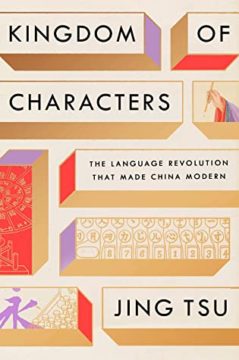 Despite its long and extensive literary heritage, and despite being the home of some of the earliest printed books, Qing-dynasty China found itself at a profound disadvantage in the new global information order that evolved in the 19th century as part of the intertwined processes of colonial expansion and globalisation. Foreign powers subordinated China through the deployment of advanced maritime technologies and weaponry. The Qing empire found itself hampered in its efforts to respond by the nature of its written language. Knowledge is power, goes the saying, but not if knowledge cannot be organised, retrieved, transmitted and reproduced.
Despite its long and extensive literary heritage, and despite being the home of some of the earliest printed books, Qing-dynasty China found itself at a profound disadvantage in the new global information order that evolved in the 19th century as part of the intertwined processes of colonial expansion and globalisation. Foreign powers subordinated China through the deployment of advanced maritime technologies and weaponry. The Qing empire found itself hampered in its efforts to respond by the nature of its written language. Knowledge is power, goes the saying, but not if knowledge cannot be organised, retrieved, transmitted and reproduced.
more here.
Friday Poem
Photograph of a Lynching
is it the cut glass
of their eyes
looking up toward
the new gnarled branch
of the black man
hanging from a tree?
is it the white milk pleated
collar of the woman
smiling toward the camera,
her fingers loose around
a christian cross drooping
against her breast?
is it all of us
captured by history into an
accurate album? will we be
required to view it together
under a gathering sky?
by Lucille Clifton
from Blessing the Boats: New and Selected Poems 1988-2000
from Boa Editions, 2000
The Rebirth of the Ebony Test Kitchen, a Home for Black Cuisine
Sophia Hollander in New Yorker:
 One morning in January, 2020, a group of curators and officials from the Museum of Food and Drink headed out to the industrial edge of Queens to assess the status of their most high-profile acquisition to date: the Ebony Test Kitchen. The kitchen, originally situated on the tenth floor of the Johnson Publishing Company Building, in downtown Chicago, tested recipes for Ebony magazine’s famed “Date with a Dish” cooking column, which became a touchstone of African American cuisine. “This kitchen, it’s like—I don’t even know if calling it the Black Julia Child’s kitchen does it justice, but it is that important,” Jessica B. Harris, one of the leading scholars of Black culinary history, told me. In 2017, news emerged that the building which housed the kitchen was about to be converted into apartments. To save it, volunteer preservationists rushed in and dismantled the kitchen in a single weekend. They selected mofad as the new stewards. In February, it will finally be put on display, in an exhibition called “African/American: Making the Nation’s Table,” curated by Harris, at the Africa Center, in Harlem. “Let’s hope I keep it together,” Harris told me, as we prepared to head to the Queens warehouse. “Those walls will start shimmering and talking. I probably contributed to some of the grease on them.”
One morning in January, 2020, a group of curators and officials from the Museum of Food and Drink headed out to the industrial edge of Queens to assess the status of their most high-profile acquisition to date: the Ebony Test Kitchen. The kitchen, originally situated on the tenth floor of the Johnson Publishing Company Building, in downtown Chicago, tested recipes for Ebony magazine’s famed “Date with a Dish” cooking column, which became a touchstone of African American cuisine. “This kitchen, it’s like—I don’t even know if calling it the Black Julia Child’s kitchen does it justice, but it is that important,” Jessica B. Harris, one of the leading scholars of Black culinary history, told me. In 2017, news emerged that the building which housed the kitchen was about to be converted into apartments. To save it, volunteer preservationists rushed in and dismantled the kitchen in a single weekend. They selected mofad as the new stewards. In February, it will finally be put on display, in an exhibition called “African/American: Making the Nation’s Table,” curated by Harris, at the Africa Center, in Harlem. “Let’s hope I keep it together,” Harris told me, as we prepared to head to the Queens warehouse. “Those walls will start shimmering and talking. I probably contributed to some of the grease on them.”
More here. (Note: At least one post throughout the month of February will be devoted to Black History Month. The theme for 2022 is Black Health and Wellness)
Does the human lifespan have a limit?
Michael Eisenstein in Nature:
 In the late eighteenth century, while in hiding from his fellow French revolutionaries, the philosopher and mathematician Nicolas de Condorcet posed a question that continues to occupy scientists to this day. “No doubt man will not become immortal,” he wrote in Sketch for a Historical Picture of the Progress of the Human Mind, “but cannot the span constantly increase between the moment he begins to live and the time when naturally, without illness or accident, he finds life a burden?”
In the late eighteenth century, while in hiding from his fellow French revolutionaries, the philosopher and mathematician Nicolas de Condorcet posed a question that continues to occupy scientists to this day. “No doubt man will not become immortal,” he wrote in Sketch for a Historical Picture of the Progress of the Human Mind, “but cannot the span constantly increase between the moment he begins to live and the time when naturally, without illness or accident, he finds life a burden?”
The answer to that question remains the subject of debate. Some researchers posit that modern human lifespans are nearing a natural ceiling, whereas others see no evidence for such a limit. Arguments have often become heated, with research articles occasionally prompting angry letters to journal editors and even allegations of fraud.
More here.
